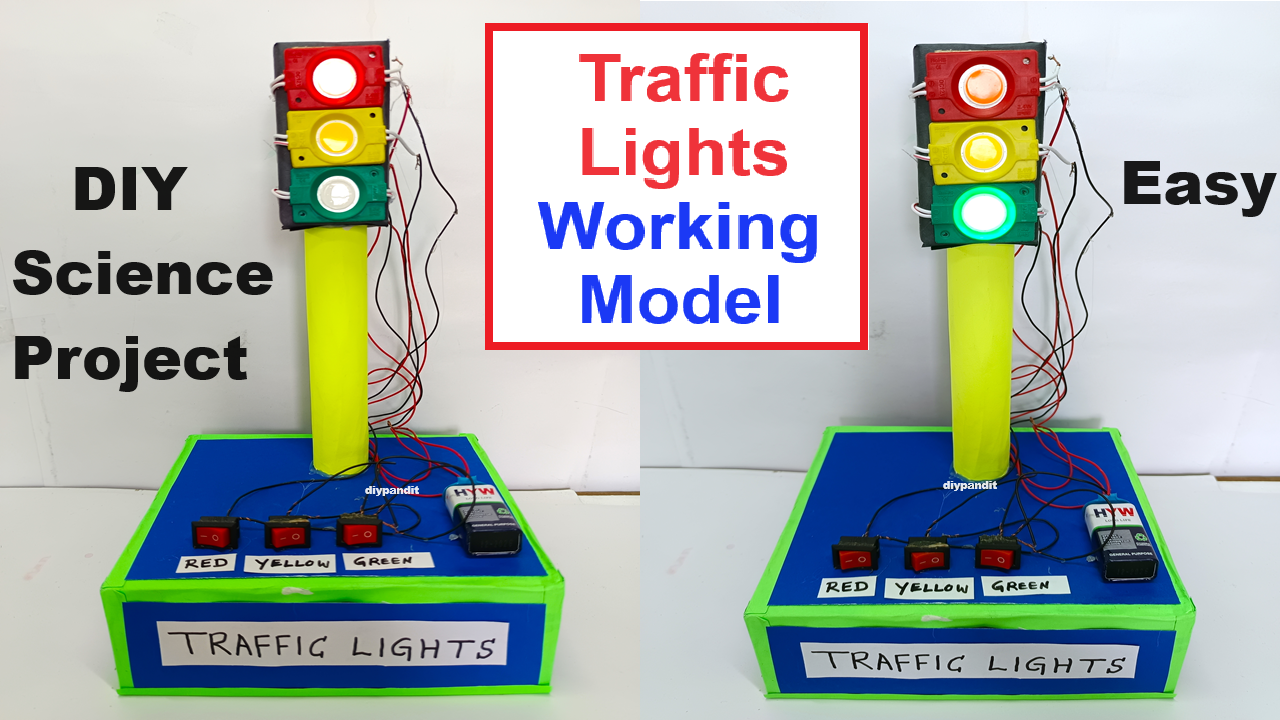A traffic light working model demonstrates how traffic signals control the flow of vehicles and pedestrians at an intersection to ensure safe and orderly traffic movement.
The model simulates the functioning of a real traffic light system using basic electrical components to show how red, yellow, and green signals alternate to manage traffic.

Key Components of the Model:
- LED Lights (Red, Yellow, Green): Three LED lights represent the red, yellow, and green signals. These LEDs are used to simulate the actual traffic lights that control traffic flow.
- Battery: A 9V battery or similar power source provides the necessary electricity to power the LEDs and the circuit.
- Transistor/Relay: A transistor or relay controls the switching of the LEDs, ensuring that they light up in a specific sequence (red, yellow, green).
- Resistors: Resistors are used to limit the current flowing through the LEDs, preventing damage to the components.
- Wires and Switches: Wires connect the components, and a switch may be used to turn the system on or off.
How It Works(Traffic light working model):
- Power Supply: The battery provides electrical energy to the circuit, powering the LEDs and allowing them to light up.
- Controlling the Lights: A relay or transistor is used to control the current flowing to each LED. The system is programmed (or set with a timer) to cycle through the traffic light sequence.
- Red Light: The red LED turns on first, signaling vehicles to stop.
- Green Light: After a set time, the green LED turns on, allowing vehicles to go.
- Yellow Light: After the green light, the yellow LED turns on briefly, indicating that the light is about to turn red.
- Timing Sequence: The relay or timer ensures that each LED stays on for the appropriate amount of time to manage traffic safely and efficiently. The sequence of red, yellow, and green repeats in a continuous cycle.
Applications and Learning:
- Real-Life Insight: This model demonstrates the basic principles of how traffic lights work to manage traffic flow at intersections.
- Educational Value: It helps explain the role of electrical circuits in controlling signals, the concept of timing in traffic management, and how automation is used in everyday systems.
This traffic light model is a great way to introduce concepts of electronics, circuits, and traffic safety in a hands-on and engaging way.

